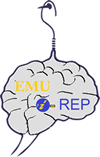JavaScript is disabled for your browser. Some features of this site may not work without it.
The Integration of Form and Structure in The Work of Louis Kahn
Rabifard, Milad
Date:
2011
Abstract:
ABSTRACT: An important aspect of design, as a product of a cultural context, is the unity between form and structure in architecture. In modern architecture, since the Renaissance, the emphasis has been on stylistic expression, and consequently much consideration has been placed on formalistic and geometric elements of design, as for example, the tradition of Baroque and Neo-Calssical architecture. Since the Industrial Revolution, and particularly with the increasing use of modern materials and structural systems (e.g. iron, steel. glass, reinforced concrete, high-rise and wide span structures) the expression of structure began to emerge as main stylistic criteria. But, this expression was not a balanced statement between form and structure but rather the emphasis was on tectonic. This is one of the major criticisms of Postmodern architects regarding modern architecture; that is, the reduction of architecture to mechanical and functionalist expression. By contrast, the work of Louis Kahn is a very good example of both a more balanced and holistic approach toward an inclusive design, in which the integration of form
and structure plays a major role. The aim of this thesis is to discuss and analyze the ideas and methods implicit to Louis Kahn’s work; i.e. an understanding of this integration and how he applied this to his design. This is important because, today, much architectural work suffers from the unbalanced emphasis upon formalist or tectonic expressionism. Louis Kahn, and his successors are examples of how architecture, as a cultural as well as tectonic/functionalist form is result of designing with an understanding of the integration of form and structure, as an expression of a particular cultural period. This thesis will conclude with examples and a discussion, of relevant architectural successors of Kahn and their expression of this integral approach to architectural design in contemporary architecture.
Key Words: Louis I. Kahn, Influences, Theory, Form, Structure.
……………………………………………………………………………………………………………………………………………………………………………………………………………………
ÖZ: Bir kültürel bağlamda bir ürünü olarak tasarımın önemli bir yönü, form ve mimari yapısı arasındaki birliktir. Modern mimaride, Rönesans'tan bu yana, vurgu ve üslup ifade edilmiş dolayısıyla çok dikkate örnek olarak, tasarım şekilci ve geometric elemanları yerleştirildi, Barok ve Neo-Calssical mimari geleneği. Modern malzemeler ve yapısal sistemlerin kullanımının artması Sanayi Devriminden beri ve özellikle (örneğin demir, çelik, cam, beton, yüksek katlı ve geniş açıklıklı structure pekiştirmek) yapısının ifadesi ana biçimsel ölçüt olarak ortaya çıkmaya başladı. Ama, bu ifade form ve yapı değil vurgu yapısalcı vardı arasında dengeli bir açıklama değildi. Bu modern mimarisi ile ilgili Post-modern mimarlar önemli eleştirilerden biridir; mekanik ve fucntionalist ifade mimarisinin azalma olduğunu söyledi. Buna karşılık, Louis Kahn çalışmaları hangi biçim ve yapı entegrasyon önemli bir rol oynar kapsayıcı bir tasarım doğru hem de daha dengeli ve bütüncül bir yaklaşımla, çok iyi bir örnektir.Ve bu bütünleşme bir anlayış yani onun tasarımı bu uygulanan nasıl, bu tezin amacı tartışmak ve fikir ve yöntemler Louis Kahn'ın eserleri ile örtülü analiz etmektir. Bugün, çok mimari eser formalist veya structurlist ekspresyonizm üzerine dengesiz vurgu muzdarip, çünkü bu önemlidir. Louis Kahn ve halefleri örnekleridir nasıl mimari, kültürel bir yanı structuralis / functionalis form olarak belli bir kültürel dönemin bir ifadesi olarak, biçim ve yapı entegrasyon anlayışı ile tasarımı sonucu olarak. Bu tez örnekleri ve Kahn ilgili mimari halefleri ve çağdaş mimarlık mimari tasarım için bu entegre yaklaşımın kendi ifadesi bir tartışma ile sona erecektir.
Anahtar Kelimeler: Louis I. Kahn, etkileri, Teori, Form, Yapı.
Description:
Master of Science in Architecture. Thesis(M.S.)--Eastern Mediterranean University, Faculty of Architecture, Dept. of Architecture, 2011. Supervisor: Assist. Prof. Dr. Isaac Zelig Lerner.
Files in this item
This item appears in the following Collection(s)
Search EMU I-Rep
Browse
-
All of DSpace
-
This Collection
My Account
Statistics
Eastern Mediterranean University, Özay Oral Library, Famagusta, North Cyprus via Mersin 10 TURKEY
If you find any errors in content, please contact osman.soykan@emu.edu.tr
If you find any errors in content, please contact osman.soykan@emu.edu.tr

EMU I-Rep by Eastern Mediterranean University Institutional Repository is licensed under a Creative Commons Attribution-Gayriticari-NoDerivs 3.0 Unported License
DSpace software copyright © 2002-2011 Duraspace








